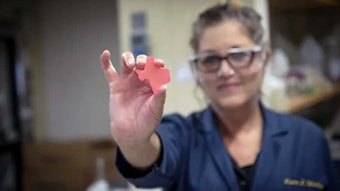In dilute solutions, surfactants form spherical micelles with aggregation numbers in the region of 50–100 units. These micellar solutions are isotropic with low viscosity. At higher surfactant concentrations, the spherical micelles tend to form cylindrical structures, which show flow birefringence. At even higher surfactant concentrations, a series of mesophases referred to as liquid crystalline phases appear, whose structure depends on the nature and concentration of the surfactant solution.
Three main types of liquid crystalline structures can be identified, as illustrated in Figure 1: hexagonal (H1), micellar cubic (I1) and lamellar (La) phase. These liquid crystalline phases can be identified using polarizing microscopy, X-ray diffraction, nuclear magnetic resonance (NMR) and various rheological techniques. Using polarizing microscopy, rheology and NMR, the liquid crystalline phases of a series of nonionic surfactants are investigated here, namely trideceth-7,9,11 and 20 (synthetic primary C13–15 alcohol with 7, 9, 11 and 20 mol ethylene oxide). The transition from isotropic micellar to hexagonal, cubic and lamellar phases were investigated using viscoelastic measurements. The results clearly showed that the structure of the liquid crystalline phases could be related to their rheological characteristics.
Many cosmetic o/w emulsions contain some of the surfactant assembly structures (liquid crystalline phases) in the continuous phase. These are produced using surfactant mixtures with a different hydrophilic-lipophilic balance (HLB).











